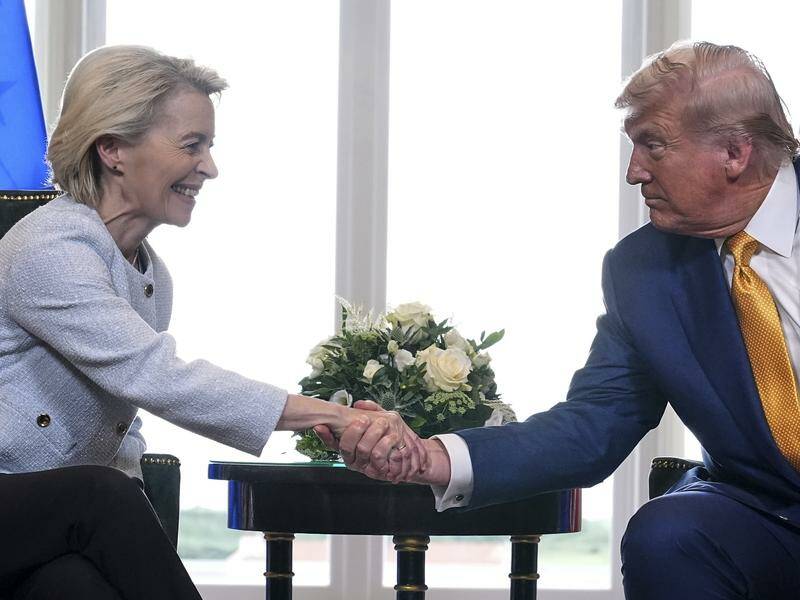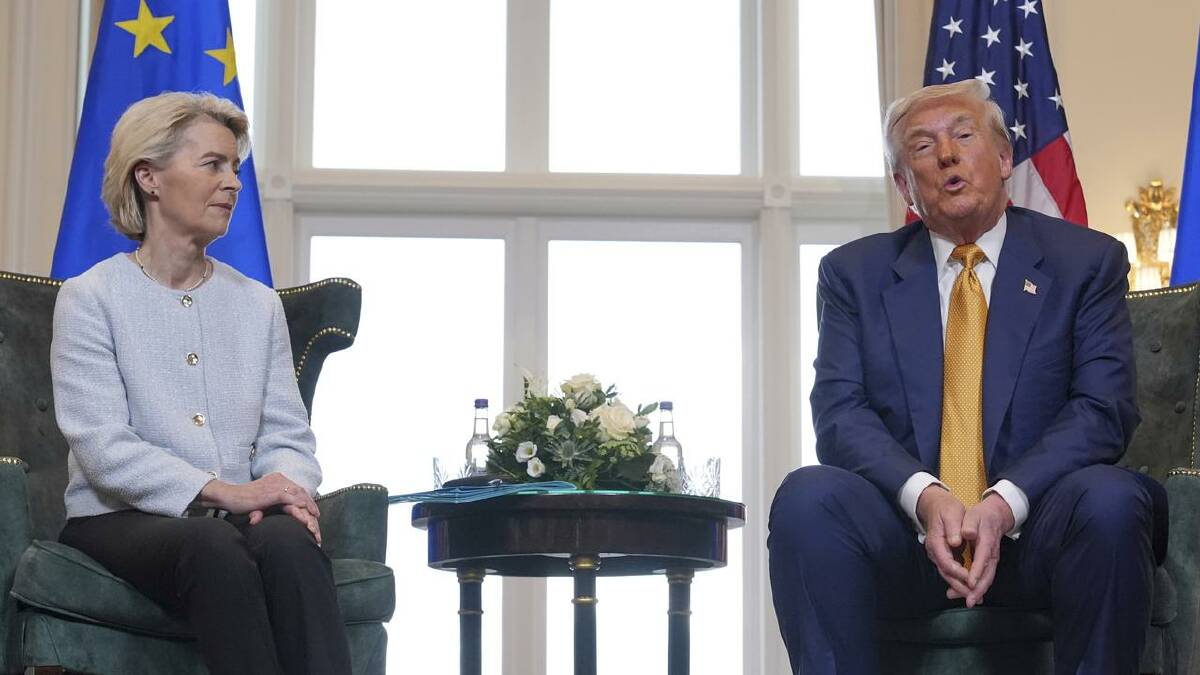
The United States has struck a framework trade deal with the European Union, imposing a 15 per cent import tariff on most EU goods, but averting a spiralling battle between two allies which account for almost a third of global trade.
Subscribe now for unlimited access.
or signup to continue reading
See subscription optionsThe announcement came after European Commission President Ursula von der Leyen travelled for talks with US President Donald Trump at his golf course in western Scotland to push a hard-fought deal over the line.
"I think this is the biggest deal ever made," Trump told reporters after an hour-long meeting with von der Leyen, who said the 15 per cent tariff applied "across the board".
"We have a trade deal between the two largest economies in the world, and it's a big deal. It's a huge deal. It will bring stability. It will bring predictability," she said.

The deal, which also includes $US600 billion ($A901 bn) of EU investments in the United States and $US750 bn ($A1.1 trillion) of EU purchases of US energy over Trump's second term, will indeed bring clarity for EU companies.
Even so, the baseline tariff will be seen by many in Europe as a poor outcome compared with the initial European ambition of a zero-for-zero tariff deal, although it is better than the threatened 30 per cent rate.
German Chancellor Friedrich Merz welcomed the deal, saying in a statement that a trade conflict had been averted that would have hit Germany's export-driven economy and its large auto sector hard.
But Bernd Lange, the German Social Democrat who chairs the trade committee of the European Parliament, said he was "quite critical" because the tariffs were imbalanced and the pledged investment would likely come at the expense of EU industry.
The euro rose around 0.2 per cent against the dollar, sterling and yen within an hour of the deal being announced.
The deal mirrors key parts of the framework agreement the United States clinched with Japan last week.

"We are agreeing that the tariff ... for automobiles and everything else will be a straight-across tariff of 15 per cent," Trump said. That rate will not, however, apply to steel and aluminium, for which a 50 per cent tariff will remain in place, although von der Leyen said it would be cut and replaced with a quota system.
Von der Leyen said the rate also applied to semiconductors and pharmaceuticals, and there would be no tariffs from either side on aircraft and aircraft parts, certain chemicals, certain generic drugs, semiconductor equipment, some agricultural products, natural resources and critical raw materials.
"We will keep working to add more products to this list," she said, adding that the situation on spirits was still to be established.
Trump, who is seeking to reorder the global economy and reduce decades-old US trade deficits, has so far reeled in agreements with Britain, Japan, Indonesia and Vietnam, although his administration has failed to deliver on a promise of "90 deals in 90 days."
Arriving in Scotland, Trump said the EU wanted "to make a deal very badly" and said, as he met von der Leyen, that Europe had been "very unfair to the United States".
His main bugbear is the US merchandise trade deficit with the EU, which in 2024 reached $US235 bn ($A353 bn), according to US Census Bureau data. The EU points to the US surplus in services, which it says partially redresses the balance. Trump also talked on Sunday about the "hundreds of billions of dollars" that tariffs were bringing in.
Australian Associated Press

